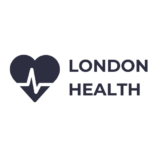Heart disease is the UK’s biggest killer, claiming thousands of lives each year. There are many different types of heart condition; this section will outline some of the most common heart conditions, as well as offering advice on how to keep your heart healthy.
Diagnosing Heart Conditions
There are a number of tests which may be carried out to identify and diagnose heart conditions; the most common tests are explained in detail below:
- Coronary Angiogram: this test is used to allow doctors to look inside the coronary arteries. During the test a catheter is passed upwards from the groin or arm to the heart. A dye is then inserted into the bloodstream and doctors follow the movement of the liquid through the arteries; this enables them to see any narrowing or blockages in the arteries.
- Echo cardiogram: this test uses ultrasound waves to enable doctors to see a 3D image of the heart in action. This test is usually carried out to allow doctors to identify any problems with the structure of the heart. It usually takes around an hour and can be done in outpatient’s clinic.
- Electrocardiogram (ECG): this test monitors the electrical activity of the heart and is normally used to detect problems with the rhythm of the heart beat. During the test, patients will have a number of patches attached to their skin; these patches are electrodes and they are hooked up to a screen where the doctor can see how the heart is functioning. In most cases, this is quick test, which can be carried out by your GP, but sometimes patients will be monitored for up to 24 hours to get a better idea of how their heart is functioning (this is done in hospital) and allow doctors to detect any abnormalities in the heart rhythm. An ECG may also be carried out during exercise to see if the heart is pumping blood effectively.
- Magnetic Resonance Imaging (MRI): this test is used to generate images of the heart and surrounding tissue. It is commonly used to identify coronary heart disease and cardiomyopathy (damage to the muscle in the heart)
- Electrophysiological testing: this test is used to identify abnormal heart rhythms. The procedure involves placing a catheter into a vein (usually this is in the arm but it may also be in the groin) and then guiding it upwards to the heart; this action encourages the heart to beat and the top of the catheter records the electrical activity of the heart.
- Radionuclide tests: these tests are usually used to diagnose coronary heart disease. The test involves injecting an isotope (a radioactive substance) into the bloodstream; a camera that is placed on your chest will then follow the movement of the isotope as it passes through the heart and circulatory system.
Congenital Heart Conditions
Congenital heart conditions occur at birth and are also known as birth defects of the heart; heart defects are the most common type of birth defect and they affect around 6 in every 1,000 babies. Today, with advances in technology and medical treatments, 80 percent of babies born with a heart defect will survive.
Types of congenital condition
There are several different types of birth defect that affect the heart but there are two main types of condition; these are cyanotic and acyanotic defects. Cyanotic conditions occur when there is not enough oxygen in the bloodstream and acyanotic defects occur when there is a problem in the circulatory system that means the blood is not pumped around the body properly.

